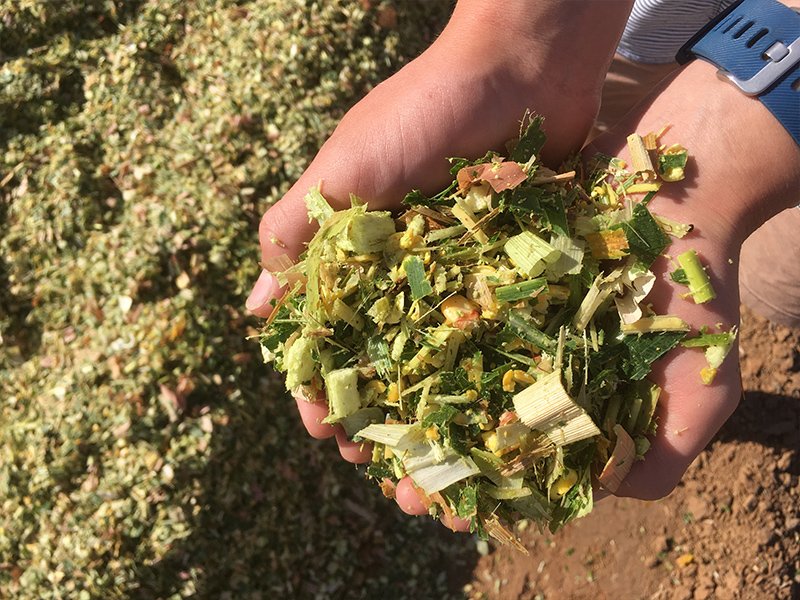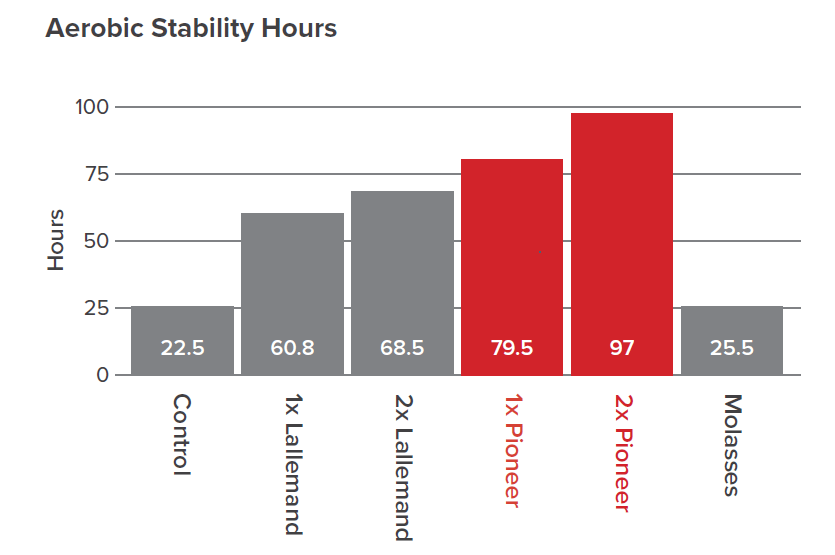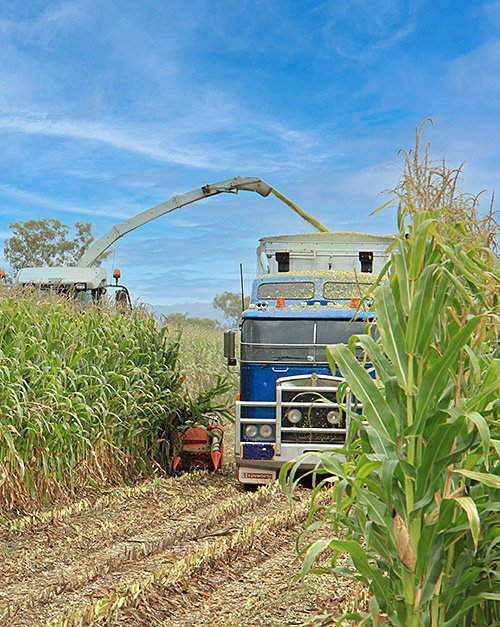Why Pioneer silage inoculant is so effective
Back
The bacteria used in these inoculants are proprietary to Pioneer and are exclusively used in only Pioneer products.
No other company has access to these same strains of bacteria. Over these years it has been proven that Lactobacillus buchneri has been the main bacterial strain of choice to ensure silage pits remain cool and to prevent feed losses due to the growth of yeasts and moulds.
During the identification and development process of a new inoculant Pioneer microbiologists test thousands of bacterial combinations both in the laboratory and animal trials, this is because bacterial strains react differently when combined with other strains than they do on their own.
Pioneer commercialised the first inoculant containing L. buchneri in 2000, this was followed in 2003 with the first combination inoculant product 11C33.
This original 11C33 product contained crop specific Lactic Acid Bacteria strains combined with L. buchneri to deliver rapid pH decline and greatly improve pit life.
In 2016 Pioneer introduced Rapid React technology products which contains a new L. buchneri strain that works rapidly to produce stable silage in just seven days.
A 2009 study conducted in the USA by Huisden et al and published in the Journal of Dairy Science (vol. 92 No.2 2009) looked at the effect of applying molasses or inoculants at two rates on the fermentation and aerobic stability of corn silage and compared two L. buchneri containing products Pioneer 11C33 (containing Lactobacillus plantarum, L. buchneri and Enteroccocus faecium) and a product containing Lallemand L. buchneri 40788 strain and Pediococcus pentosaceus 12455 strain with a bare control and a molasses treatment.
The research concluded that the silage treated with all inoculant-based treatments had a similar pH value, and total VFA concentration was higher in Pioneer treated silage compared to the control. Aerobic Stability was best from the Pioneer 11C33 inoculant.

Microbial Counts and Aerobic Stability
Lactic acid bacteria counts were unaffected by treatment. However, molasses-treated silage had the highest mould counts while the Pioneer treatment had the lowest.
Yeasts were 25% lower in all inoculant treatments compared to control & molasses treatments, and Pioneer 1x and Pioneer 2x silages had fewer yeasts than Lallemand 1x and Lallemand 2x treatments.
During the study the samples were opened to the air to mimic an open pit face, control and molasses treated silages were only stable for 25 hours whereas inoculant treated silages were stable for an additional 35-71 hours (see Figure).
Pioneer-treated silages had the best aerobic stability with an additional 19-37 hours above the Lallemand products. This means that the dairy farmer can have confidence in the Pioneer-treated silage to feed out silage feed requirements up to a day in advance with no adverse effects on feed quality. Also, the Pioneer label rate (1x) was stable for 11 hours longer than the double rate (2x) of the Lallemand product.
This research has proven that applying more inoculant (over and above the manufacturer’s specifications), especially with the Pioneer product, is not necessary. It also shows that the amount of applied inoculant and the efficiency of the bacteria to convert the sugars into Lactic Acid Bacteria and hence produce aerobically stable silage varies greatly.
As in the study the Lallemand (1x) product was applied at 8 mg/kg fresh forage while the Pioneer 11C33 (1x) was applied at 1.1 mg/kg fresh forage and as shown in Fig 1 the 1x rate of Pioneer 11C33 was stable for longer than both the 1x and 2x rates of the Lallemand product.
Bacterial efficiency

This is another reason why the label statement of CFUs or colony forming units is only part of the story. It is a mixture of the amount of CFUs in the inoculant and the efficiency of these bacteria to get to work quickly and effectively.
Pioneer microbiologists work to ensure that the bacteria that is in a Pioneer inoculant is the best it can be.
Bacterial strains in silage will multiply until they achieve a population of about 1 billion cfu/gram of forage and they seldom exceed that population count.
Pioneer silage microbiologists have performed hundreds of experiments to understand at what dosage our proprietary L. buchneri strains most effectively dominate fermentation.
What other companies use for counts is irrelevant to the strain dosages found in Pioneer® brand inoculants and it can only be assumed that some companies have higher counts because their strains differ in activity than Pioneer strains.
IN0723-06A
Your seed is backed by
local experience
With dedicated and highly skilled team members located throughout Australia you can be sure of accessing the best local knowledge to help you maximise your investment in Pioneer® brand hybrid seed. Get in touch with your local Territory Sales Manager or Farm Services Consultant today.
